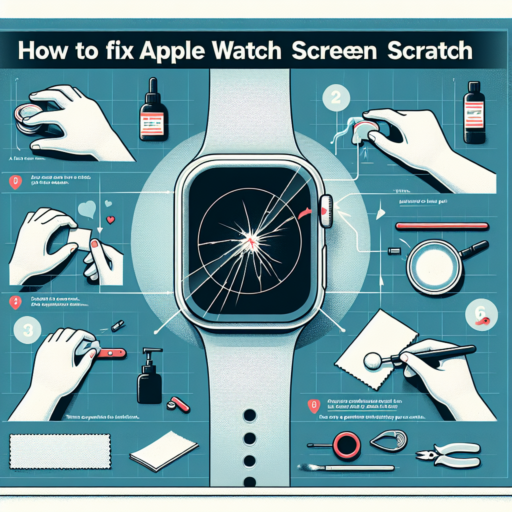How to remove scratches from a watch screen?
Removing scratches from a watch screen can often seem daunting, but with the right approach and materials, it is a highly achievable task. Whether you’re dealing with minor surface marks or deeper scratches, several effective methods can help bring back the original luster of your watch screen.
Using Toothpaste for Minor Scratches
Toothpaste, especially those that are not gel-based, can act as a mild abrasive, making it excellent for removing light scratches. Apply a small amount of toothpaste to a cotton swab or soft cloth, and gently rub it over the scratch in a circular motion. After a few minutes, wipe the area with a damp cloth to remove the toothpaste and check the results. Repeat the process if necessary, but be cautious to avoid damaging the surrounding areas.
Professional Scratch Removal Kits
For deeper scratches, a professional scratch removal kit designed for watch screens can be more appropriate. These kits often include a polishing compound and a set of detailed instructions. It’s important to follow the manufacturer’s guidelines carefully to prevent any further damage. For the best results, cover the bezel of the watch with masking tape to protect it during the scratch removal process.
Note: It’s essential to understand the type of watch screen you’re dealing with (e.g., sapphire, mineral) as some methods may not be suitable for all materials. Always perform a small patch test if you’re unsure about the compatibility of the scratch removal technique with your watch screen.
How do you fix a scratch on the Apple screen?
Finding a scratch on your Apple screen can be frustrating, but don’t worry, as there are several steps you can follow to possibly reduce or eliminate the mark. Fixing a scratch depends on its depth and size, but starting with the least invasive method is always best to avoid further damage.
Step 1: Assess the Scratch
Before attempting any repair, closely examine the scratch. If it’s superficial, you might have a good chance of improving or completely removing it using DIY methods. Deep scratches, however, might require professional intervention or even a screen replacement.
Step 2: DIY Scratch Removal
- Soft Cloth and Baking Soda: Mix two parts baking soda with one part water to create a thick paste. Gently apply this to the scratch in a circular motion using a soft, lint-free cloth. This method can be particularly effective for very minor surface scratches.
- Screen Protector or Liquid Screen Protector: Sometimes, applying a screen protector can help hide minor scratches. In addition, some liquid screen protectors can fill in the scratches, significantly reducing their visibility.
Remember, fixing a scratch on your Apple screen can be a delicate process. If the scratch is deep or if you’re unsure about the DIY methods, it might be best to consult with a professional repair service to prevent further damage.
How to remove scratches from watch glass with toothpaste?
Removing scratches from watch glass can seem daunting, but with a simple household item like toothpaste, you can easily minimize these marks. Toothpaste acts as a mild abrasive, which helps in buffing out the scratches, making your watch glass appear almost as good as new. It’s essential to note that this method is most effective on minor surface scratches and might not work on deeper gouges.
To begin, it’s crucial to use plain white toothpaste, avoiding any gel-based or whitening formulas which might cause further abrasion to the glass. Apply a small amount of toothpaste onto the watch glass and use a soft cloth or cotton swab to gently rub it in a circular motion over the scratch. The process might require some patience, as you’ll need to continue this gentle circular motion for a few minutes.
After buffing with the toothpaste, it’s vital to carefully remove any remaining toothpaste residue from the watch glass to avoid any potential damage. Rinse the glass under lukewarm water or use a damp, soft cloth to wipe it clean. Once done, you should notice a significant reduction in the appearance of scratches. For persisting or deeper scratches, repeating the process might yield better results.
No se han encontrado productos.
Why does toothpaste remove scratches?
Many are surprised to learn about the unconventional use of toothpaste outside of oral hygiene. Its efficacy in removing scratches from various surfaces, especially glass and screens, can be attributed to the mild abrasive ingredients it contains. These abrasives, primarily composed of calcium carbonate and hydrated silica, make toothpaste an excellent, finely granulated polish. When applied to a scratched area and gently rubbed in a circular motion, these abrasives gently wear down the rough edges around the scratch, making it less visible or entirely removing superficial scratches.
The composition of toothpaste is designed to be tough on plaque but gentle enough not to damage teeth. This balance between abrasiveness and gentleness translates well to scratch removal. Unlike harsh chemical polishers that might remove a scratch but damage the finish or further wear down the material, toothpaste provides a safer alternative. It’s particularly effective on screens of smartphones, watches, and glasses, where traditional polishing compounds might be too harsh.
In addition to its abrasive components, the slight paste-like consistency of toothpaste allows it to fill in scratches temporarily. While this may not completely restore the damaged area, it can significantly diminish the visibility of minor scratches, making them nearly undetectable to the naked eye. This filler effect, combined with the smoothing action of the abrasives, offers a dual approach to tackling scratches on sensitive surfaces without resorting to professional repair services.




